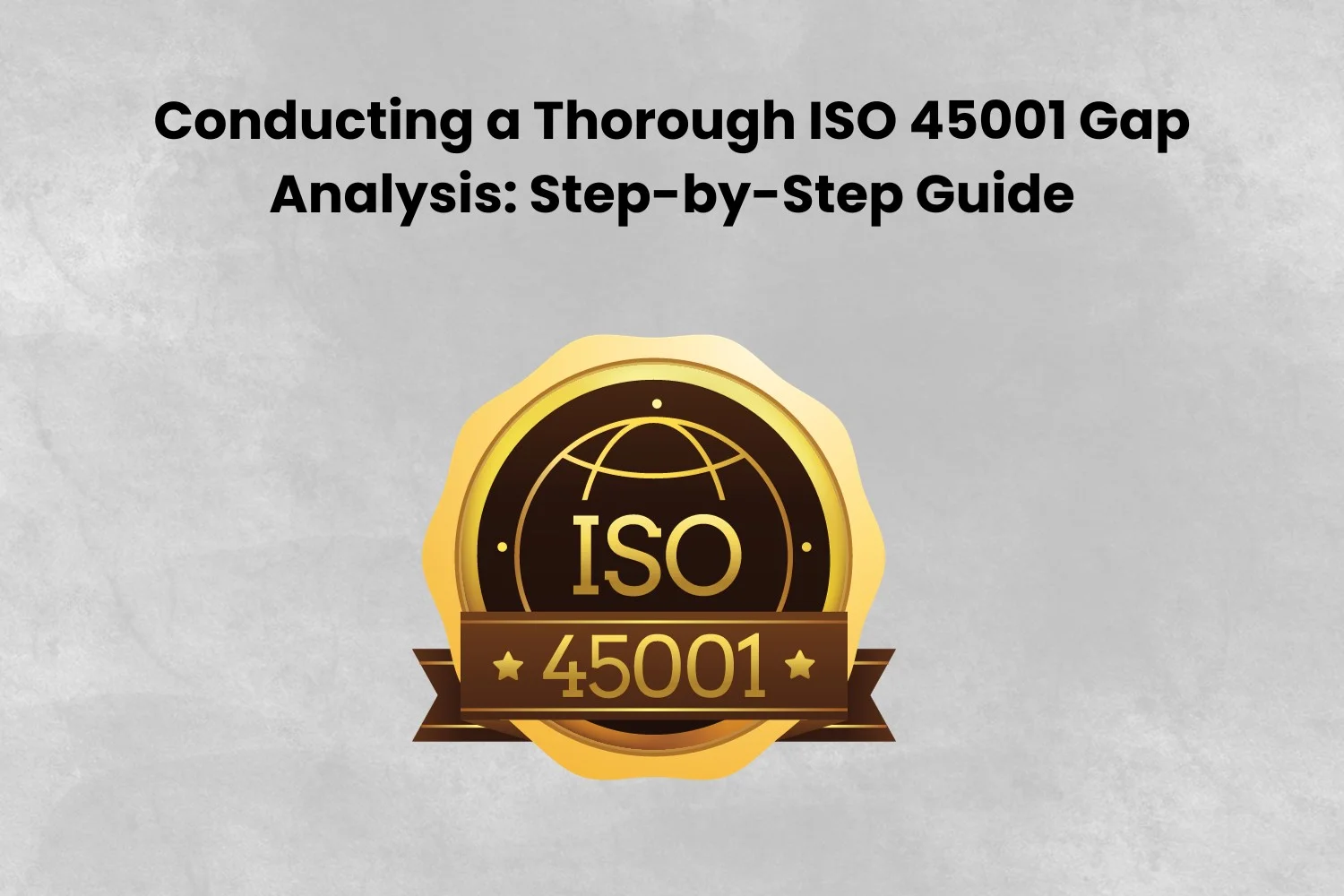Conducting a Thorough ISO 45001 Gap Analysis: Step-by-Step Guide

Implementing an effective occupational health and safety management system is crucial for ensuring a safe and healthy work environment. ISO 45001 provides a comprehensive framework for organizations to manage occupational health and safety risks effectively. Conducting a thorough gap analysis is an essential first step in the ISO 45001 implementation process, as it helps identify areas where an organization’s current practices may fall short of the standard’s requirements. In this blog, we will explore a step-by-step approach to conducting a thorough ISO 45001 Gap Analysis. Additionally, we’ll discuss the importance of ISO 45001 Course in preparing organizations for this critical process.
Table of Contents
- What is ISO 45001 Gap Analysis
- Step-by-Step Guide to Conducting an ISO 45001 Gap Analysis
- Importance of ISO 45001 Courses in Gap Analysis
- Conclusion
What is ISO 45001 Gap Analysis
Comparing an organisation’s current occupational health and safety management system to ISO 45001 standards is a gap analysis. The aim is to find any holes or non-compliance areas that must be fixed to get ISO 45001 certification. Organisations may create a clear plan for putting the required changes into practice and enhancing their performance in terms of health and safety by carrying out a comprehensive gap analysis.
Step-by-Step Guide to Conducting an ISO 45001 Gap Analysis
Here we learn steps to Conduct an ISO 45001 Gap Analysis:
- Familiarise Yourself with ISO 45001 Requirements: First, review the ISO 45001 criteria in detail. Gain a thorough grasp of the requirements by familiarising yourself with the standard’s core concepts, clauses, and specifics.
- Assess Current Practices: Evaluate your organisation’s occupational health and safety management practices. Learning more about the present state of health and safety management may include interviewing key staff and examining policies, procedures, and documents.
- Identify Applicable Legal and Regulatory Requirements:
Find out which laws and regulations are relevant to the location and industry of your company. Verify that your present procedures comply with these specifications and note any gaps that need attention. - Conduct a Gap Analysis Checklist: Use a checklist that maps the requirements of ISO 45001 to your organisation’s current practices. This checklist should make it simpler to find any gaps that need improvement by emphasising areas of compliance and non-compliance.
- Document Findings: Keep track of your gap analysis’s results, including both areas of compliance and non-compliance, along with any observations or suggestions for improvements. This material will be the foundation for creating an action plan to close the gaps.
- Develop an Action Plan: Based on the findings of your gap analysis, develop a detailed action plan that outlines the steps required to address the identified gaps. Sort the action items into priority lists according to significance and viability, considering time constraints and resources.
- Implement Corrective Actions: Begin implementing the corrective actions outlined in your action plan. This might include physically modifying the workplace, educating staff members, upgrading rules and procedures, or strengthening communication channels.
- Monitor and Review Progress: Continuously monitor and review the progress of your implementation efforts. Determine how well the corrective measures fill in the holes found regularly and make necessary adjustments to your strategy.
- Prepare for Certification: Once you are confident that your organisation meets the requirements of ISO 45001, you can begin the process of seeking certification. This might include hiring a certification authority to audit your management system and confirm that it complies with the standard.
Importance of ISO 45001 Courses in Gap Analysis
Courses on ISO 45001 are essential for educating organisations to do a comprehensive gap analysis. These courses give an in-depth understanding of the standard’s requirements, concepts, and best practices, allowing learners to comprehend the subtleties of ISO 45001 implementation. Through ISO 45001 training, people may acquire the knowledge and abilities required to conduct thorough gap analyses, identify non-compliance issues, and create efficient improvement action plans.
Conclusion
To summarise, a comprehensive ISO 45001 gap analysis is essential to implementing a successful occupational health and safety management system. Organisations may improve their health and safety performance and strive towards ISO 45001 certification by identifying and addressing any gaps in their present procedures using the above-described step-by-step methodology and the information they have received from ISO 45001 courses.







